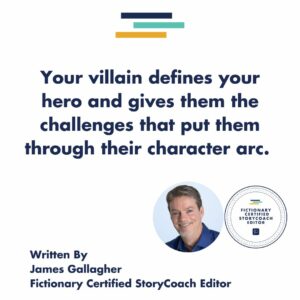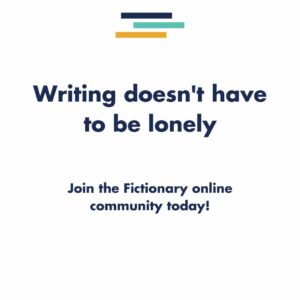
Fiction is largely driven by conflict, and nowhere is conflict more on display than in the clash of heroes and villains. At their best, these clashes leave indelible impressions on audiences and will have them eager for your next book. Think:
- Clarice and Hannibal
- Dorothy and the Wicked Witch of the West
- Freddy and the kids on Elm Street
Do you worry that your hero isn’t interesting enough or likable enough? Or that your villain isn’t compelling or imposing or scary enough?
The following should be helpful as you develop killer heroes and villains.
Who are the heroes and villains in your story?
At the most basic level, a hero is your protagonist, and the villain is the antagonist. Your hero has goals, and your villain opposes those goals.
For a compelling conflict, your hero cannot be a flat character. A round, fleshed-out hero creates an empathetic connection and causes the reader to invest more in the character. Readers will not be thrilled or scared or romanced if they don’t care about the character.
Your villain defines your hero and gives them the challenges that put them through their character arc. Think of your character heading directly toward their ultimate goal and your villain stepping in at the most inopportune times to knock them off course.
For more information about creating round and flat characters, see this post from Fictionary’s L Cooke: https://temp-fictionary.flywheelstaging.com/journal/flat-characters-definition-and-examples.

Creating Heroes and Villains
3 Tips for Creating your Hero
Tip #1: Give Them an Achilles’ Heel
All-powerful heroes are uninteresting. If a character can easily vanquish any foe, then there is no drama. The reader will have no fear that the hero might be defeated—and hence no real reason to keep reading.
Superman has kryptonite.
Indiana Jones has snakes.
Sometimes the vulnerability is an inner weakness or a ghost from the past, and when a villain exploits one of these, then you as a writer are really onto something. This is where the villain can push the hero toward completing a gripping character arc.
Tip #2: Concentrate on Inner and External Goals
It might seem obvious, but too often characters don’t have strong or obvious goals. If a character is trying actively to accomplish something, then it is almost impossible for a reader to turn away. The “Will they or won’t they?” reader question is too strong.
External goals drive the plot. Locating a magic item to save the kingdom is a clear external goal.
Inner goals are less obvious and may include something like finding a place in society, winning a parent’s love, or even loving oneself.
While characters may achieve both goals, this isn’t always the case. Some of the best story resolutions occur when a character fails in their external goal but succeeds in their inner.
For more insight on character arc, see this post from Fictionary’s Kristina Stanley: https://temp-fictionary.flywheelstaging.com/journal/what-is-a-character-arc/.
See also this L Cooke post on editing your character arc: https://temp-fictionary.flywheelstaging.com/journal/how-to-edit-a-character-arc/.

Tip #3: Give Them Choices
A character who follows through on a plan in a step-by-step manner without any complications leaves little room for dramatic intrigue. Think about presenting your character with choices along the way, and see where this leads them. You might find they surprise you with their decisions, and this can lead to whole new directions in your draft.
The series The 100 excelled time and again at giving its characters seemingly impossible choices. How does a character choose when they are faced with a dilemma in which either choice has catastrophic consequences? How do they make the “best bad choice” (often at the story’s climax)? How will this align with their character arc?
Present an impossible choice to your characters and see what happens. Your readers will be on the edge of their seats.
3 Tips for Your Villain
Now for the fun stuff. Come on, who doesn’t love (and love to hate) a good villain?
Your story will often fail or succeed based on the strength of your villain, so their construction cannot be emphasized enough. Many even suggest starting with your villain, because without the villain to create unrest in the world and present challenges, your hero cannot be a hero.
Your heroes and villains are, in a sense, opposite sides of the same coins, and the greatest trick of the villain is often to show the hero that the two of them aren’t so very different after all.
When constructing your villain, be sure that the villain has an unrivalled capacity to exploit your character’s greatest weaknesses.

Tip #1: Remember That Villains Think They’re the Hero
A villain is much more compelling when they think they are right, that they are justified in their actions. (And heroes are often more interesting when they stop to consider that, maybe, just maybe, they are in fact the bad guy.)
Developing a backstory for your villain is a great place to start:
- Do they do the things they do for noble reasons, even if from a warped perspective?
- Are their actions logical?
- Are they based on emotion?
Often heroes and villains have similar “ghosts,” and it’s the manner in which they address those ghosts that provides such an enticing contrast.
Tip #2: Demonstrate Their Power
A weak villain has sunk many a story. A great villain is seemingly impossible to defeat (emphasis on seemingly), forcing the hero to stretch and change and go places they never imagined to counter the threat and overcome.
Demonstrate a villain’s power early on to establish the threat in the mind of the reader and to shake the hero. What will the villain take from the hero to meet his own ends, and how can the hero rise, how can they change, to meet this threat?
Remember also that threats should be stacked, with the greatest being addressed at the climax. Having the hero address the villain’s greatest threat too early can drain suspense.
Tip #3: Kick the Cat, I Mean, Er, Save the Cat
The popular Save the Cat method includes having the hero perform an act of kindness early on to help establish a connection with the reader.
Above, we talked about the importance of having the villain, in essence, kick the cat. But what happens if you have the villain occasionally save a cat? Does an occasional act of unexpected kindness confound reader expectations and provide that nice bit of friction in our perceptions?
Final Thought
Writing heroes and villains is entertaining for writers.
For a fun exercise, look through the eyes of your villain and imagine that he is the hero. How does the “hero” look to you now? Can you see better what makes your villain tick?
Article Written by James Gallagher

James Gallagher is a Fictionary-Certified StoryCoach, copy editor, and proofreader. James has worked on more than 250 books and particularly enjoys horror and romance. An active member of the editing community, James loves to help authors bring out the best in their stories.
More about him can be found at https://castlewallsediting.com
Want to be part of a writing and editing community with kindness at its heart?
Do you know about the free Fictionary community? We’re connecting writers and editors who all speak the same story editing language.
You’re most welcome to join.
- Connect with other writers and editors
- Get your editing questions answered by Fictionary Certified StoryCoach editors
- Access free, live editing classes presented by editing experts
- Learn about all things Fictionary: product updates, videos, webinars, best practices


